News
Now Violence Against Health Workers a Cognizable, Non-Bailable Offence, Punishable With Upto 5 Years Imprisonment, Rs. 5 Lakh Fine

New Delhi-During the current COVID-19 pandemic, there have been instances members of healthcare services being targeted and attacked by miscreants, thereby obstructing them from doing their duties. These instances have also demoralized and as well as frightened the health workers.
In this context, the Union Cabinet in its meeting held on 22nd April 2020 has approved promulgation of an Ordinance to amend the Epidemic Diseases Act, 1897 to protect healthcare service personnel and property including their living/working premises against violence during epidemics.
The Government said that the current Ordinance is intended to ensure that during any situation akin to the current pandemic, there is zero-tolerance to any form of violence against healthcare service personnel and damage to property.
The President has given his assent for the promulgation of the Ordinance. The Ordinance provides for making such acts of violence cognizable and non-bailable offences and for compensation for injury to healthcare service personnel or for causing damage or loss to the property in which healthcare service personnel may have a direct interest in relation to the epidemic.
The amendment makes acts of violence cognizable and non-bailable offences. Commission or abetment of such acts of violence shall be punished with imprisonment for a term of three months to five years, and with fine of Rs.50,000/- to Rs.2,00,000/-. In case of causing grievous hurt, imprisonment shall be for a term six months to seven years and with fine of Rs.1,00,000/- to Rs.5,00,000/-. In addition, the offender shall also be liable to pay compensation to the victim and twice the fair market value for damage of property.
Offences will be investigated by an officer of the rank of Inspector within a period of 30 days, and the trial has to be completed in one year, unless extended by the court for reasons to be recorded in writing.
What Does Violence Means in the Ordinance?
Violence, as defined in the Ordinance, will include harassment and physical injury and damage to property. Healthcare service personnel include public and clinical healthcare service providers such as doctors, nurses, paramedical workers and community health workers; any other persons empowered under the Act to take measures to prevent the outbreak of the disease or spread thereof; and any persons declared as such by the State Government, by notification in the Official Gazette.
As per the Ordinance, the penal provisions can be invoked in instances of damage to property including a clinical establishment, any facility identified for quarantine and isolation of patients, mobile medical units and any other property in which the healthcare service personnel have a direct interest in relation to the epidemic.
Members of the Medical community, even as they continue to perform relentlessly round the clock and save human lives, have unfortunately become the most vulnerable victims as they have been perceived by some as carriers of the virus. This has led to cases of their stigmatization and ostracization and sometimes worse, acts of unwarranted violence and harassment.
The Government said that such a situation tends to hamper the medical community from performing their duties to their optimum best and maintaining their morale, which is a critical need in this hour of a national health crisis.
It said that the health workforce is our frontline soldiers in battling the spread of COVID-19. They put their own lives at risk to ensure the safety of others. They deserve our highest respect and encouragement at this moment rather than being harassed or being subjected to violence.
The Government is hoping that this Ordinance will have the impact of infusing confidence in the community of healthcare service personnel so that they can continue to contribute to serving mankind through their noble professions in the extremely difficult circumstances being witnessed during the current COVID-19 outbreak.
News
HP Govt Employees to Get Higher Pay Scale on Completion of Two Years of Service: CM Jairam
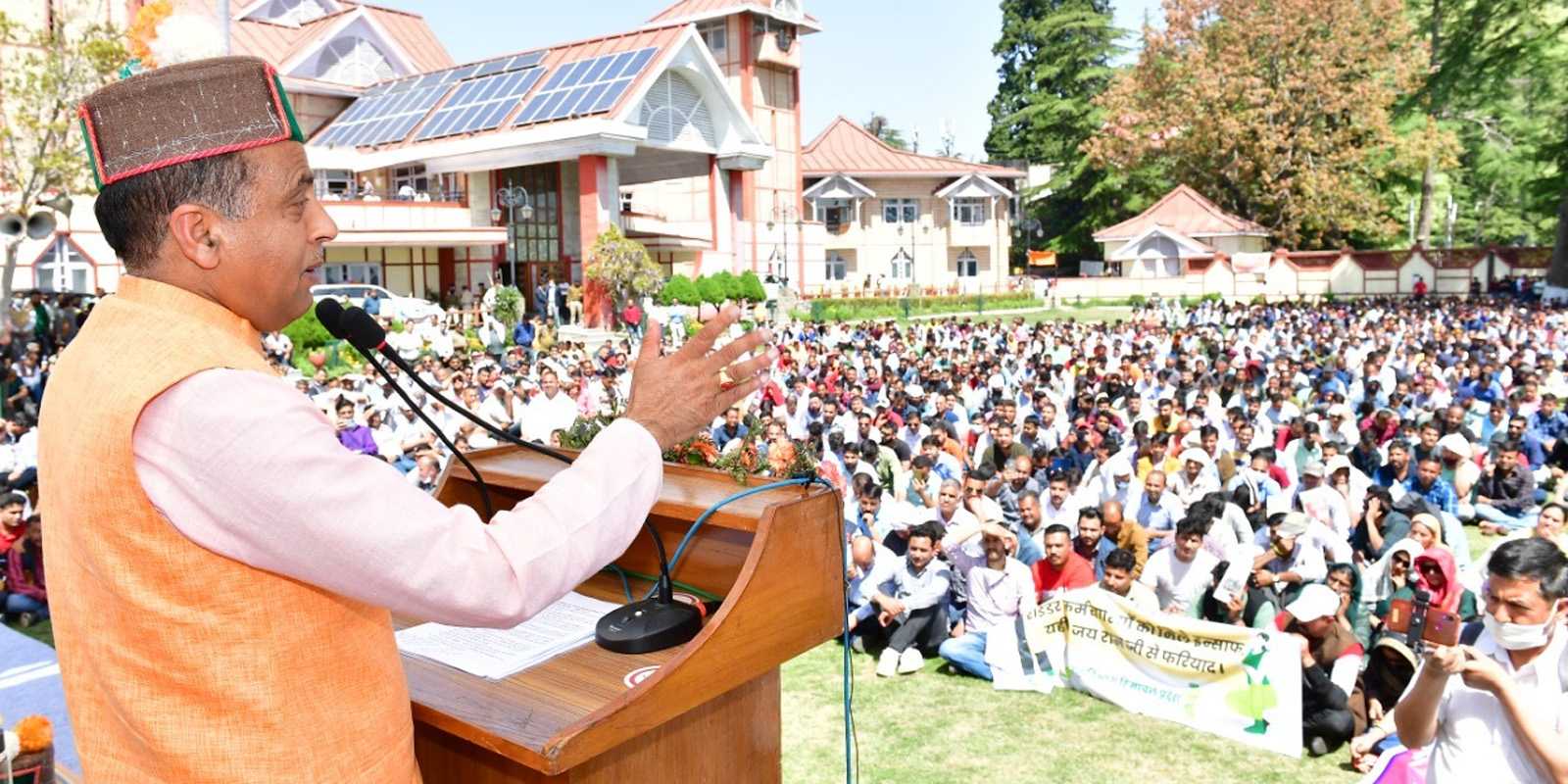
Shimla-Himachal Pradesh Government employees working in different departments before January 3, 2022, would be given a higher scale at par with other employees on completion of two years tenure of regular service. A higher pay scale was also announced for the Junior Office Assistants (IT) on completion of two years of regular service.
Chief Minister Jairam Thakur made these announcements during the Karamchari Maha Sammelan of the Himachal Pradesh Non-Gazetted Employees Federation at the hotel Peterhof on Sunday.
He appreciated the role played by the employee especially frontline workers in the battle against the pandemic.
He said most of the government employees in the state have been given revised pay scales and on average, every employee has got the benefit of a 12 to 15 percent salary hike. There has also been an increase in the pension of about 1.50 lakh pensioners of the state. The financial benefits of Rs. 7801 crore have been given to state government employees and pensioners from the year 2018 to 2022. The pensioners who retired before 2016 are getting the benefit of a 15 to 20 percent increase in the pension while around 40 thousand pensioners who retired after 2016 would be benefitted soon, he said.
He said the daily wages were Rs. 210 in the year 2017 which has been increased by the present state government to Rs. 350. Similarly, 12 per cent interim relief annually has been provided to government employees and pensioners during the present government’s tenure. He said the Himachal government has provided Dearness Allowance to its employees and pensioners on the lines of Punjab and Central governments from the due date. The Punjab government has given only 5 percent interim relief to the employees while the Himachal government has provided 21 percent interim relief to its employees.
“Out of the total interim relief amount given to the employees and pensioners amounting to about Rs. 6500 crore, Rs. 3500 crore has been paid during the tenure of our government” added the Chief Minister.
He said that the state government has increased the government contribution for NPS employees from 10 percent to 14 percent benefitting more than one lakh employees. The NPS employees are being given the benefits of retirement and death gratuity at par with employees falling under the old pension scheme. The government has also increased the upper limit of death gratuity from Rs. 10 lakh to Rs. 20 lakh.
The Chief Minister said the state government has also increased the honorarium of para-workers working in various departments. The salary of outsource workers has been hiked by Rs 1,500 per month.
Non-Gazetted Employees Federation President Ashwani Thakur thanked the Chief Minister for providing various financial and other benefits to different categories of government employees.
Nation
Most Covid Restrictions to be Lifted From March 31, Mask and Hand Hygiene to Continue

New Delhi-The Centre has issued a notification to the States informing that the provisions of the Disaster Management (DM) Act, 2005 will not be invoked in the country after March 31. The Union Health Ministry said that the use of face masks and following hand hygiene will continue.
It implies that most of the Covid-related rules and restrictions would end.
Union Home Secretary Ajay Bhalla issued the notification which said that the decision was taken following the overall improvement in the situation and the preparedness of the government in dealing with the COVID-19 pandemic.
However, local authorities and State police can still invoke fines and criminal cases against persons violating COVID-19 norms under the Indian Penal Code (IPC), a senior government official said.
The DM Act was invoked on March 24, 2020, due to the pandemic
“Over the last seven weeks or so there has been a steep decline in the number of cases. The total caseload in the country stands at 23,913 only and the daily positivity rate has declined to 0.28%. It is also worth mentioning that with the combined efforts, a total of 181.56 Cr vaccine doses have been administered,” the notification said.
“I would like to mention that in view of the nature of the disease, we still need to remain watchful of the situation. Wherever any surge in the number of cases is observed, the States/UTs may consider taking prompt and proactive action at a local level, as advised by MoHFW (Health Ministry) from time to time,” the notification said.
The Indian government had issued various guidelines and measures for the first time on March 24, 2020, under the Disaster Management Act to curb the COVID-19 situation in the country, which have been modified several times thereafter.
India currently has 23,087 active COVID-19 cases and recorded 1,778 new cases and 62 deaths in the last 24 hours. The daily positivity rate has also declined to 0.28%.
News
HP Cabinet Decisions: Country Liquor Made Cheaper in New Excise Policy, Read All Decisions
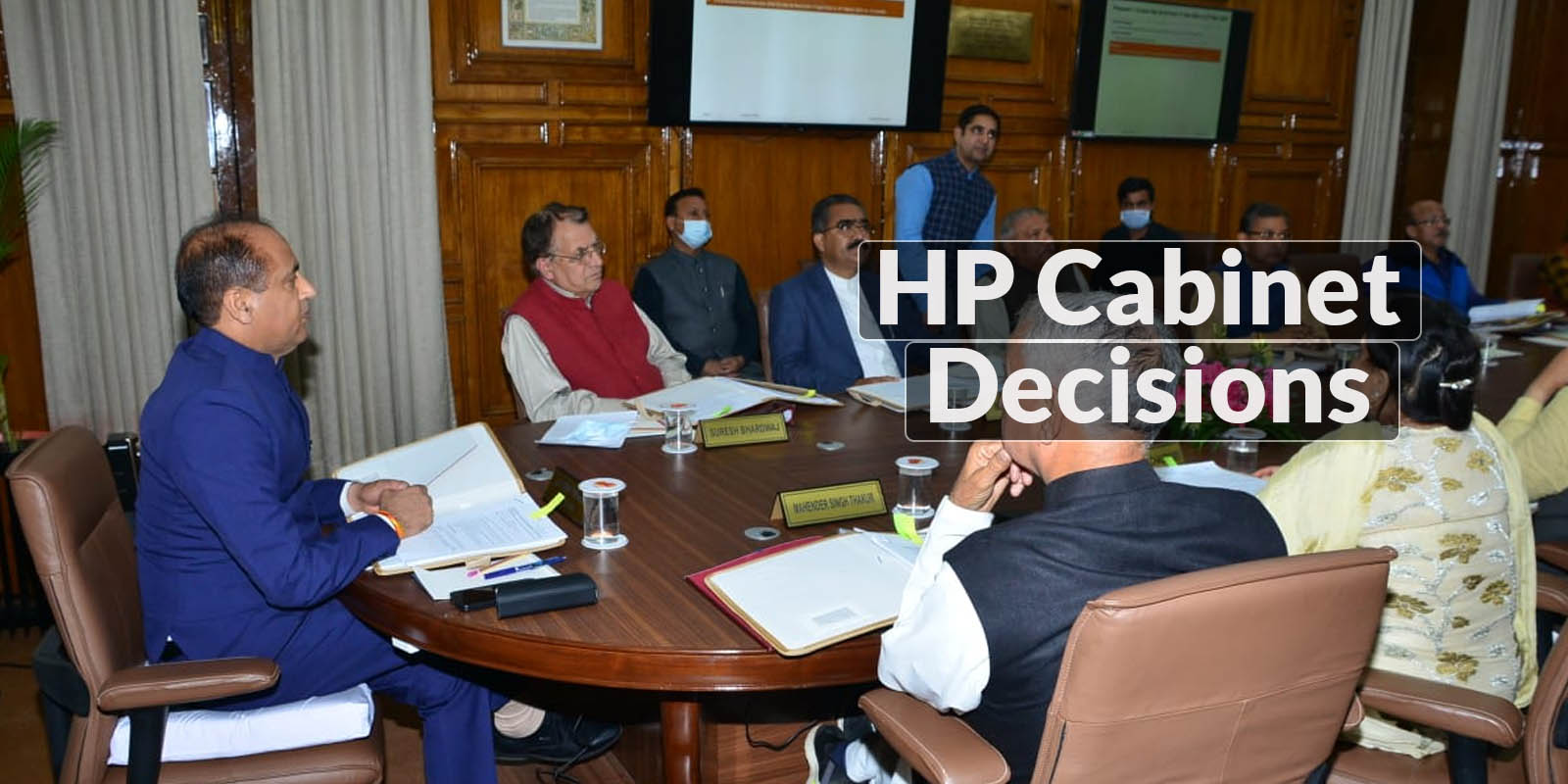
Shimla-A meeting of the Himachal Pradesh Cabinet was held on March 20, 2022, under the chairmanship of Chief Minister Jai Ram Thakur.
The excise policy for the financial year 2022-23 was approved. Approval was also given for the renewal of retail excise vends in the state for the financial year 2022-23 at the renewal fees of 4% of the value of unit/vend.
The State Government said that wants to enhance the government revenue and curb the smuggling of country liquor from the neighbouring states by a reduction in its price.
The brands of Country Liquor will be cheaper as license fees have been reduced. This will help in providing good quality liquor at a cheaper rate to the consumers.
In the new excise policy, the 15% fixed quota of country liquor for manufacturers and bottlers to be supplied to the retail licensees has been abolished. According to the government, this step will give the retail licensees to lift their quota from the suppliers of their choice and further assure the supply of good quality country liquor at competitive prices. The MRP of country liquor will be cheaper by 16% of the existing price.
In this year’s policy, the Gaudhan Vikas Nidhi Fund has been enhanced by Re.1/- from the existing Rs.1.50 to Rs.2.50.
The fixed annual license fee of Bars has been rationalized by abolishing the area-specific slabs of license fee. Now throughout the State, there will be uniform license slabs based upon the room capacity in hotels.
Rates of the annual fixed license fee of Bars in the tribal areas has been reduced considerably.
Further, all the above stakeholders will have to install CCTV cameras at their establishments as it was made mandatory for them.
Wholesale vends and retail vends, the penalty provisions under the H.P. Excise Act, 2011 have been made more stringent.
An end to end online Excise Administration System would be established in Himachal Pradesh, the government said.
HP Government estimates a collection of Rs 2131 crore revenue during the year, which will be Rs. 264 crores higher than the financial year 2021-22 – growth of 14% in state excise revenues.
The Cabinet also gave its nod to amend Himachal Pradesh Disaster Relief Manual-2012 to include deaths due to biting of honey bees, hornet and wasps, accidental drowning and deaths due to accidents of vehicles (including land, water and air) under this Manual.
The Cabinet gave its approval for filling up 11 posts of ‘A’ Class Tehsildar in Revenue Department through direct recruitment on regular basis through Himachal Pradesh Public Service Commission.
HP State Toll Policy 2022-23
The HP Cabinet also gave its nod to HP State Toll Policy for the year 2022-23 which envisages auction cum tender for all the toll barriers in the State. During the year 2021-22, toll revenue has registered a growth of 20 percent of the previous year’s revenue.


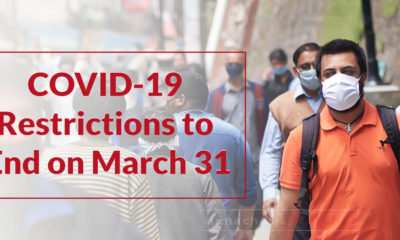

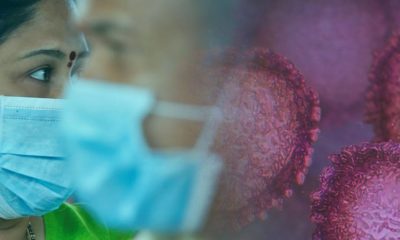

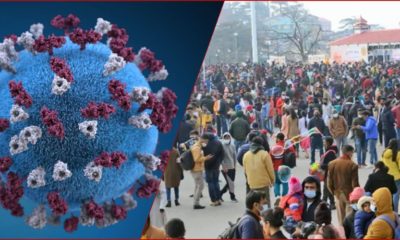






 Home Decor Ideas 2020
Home Decor Ideas 2020
